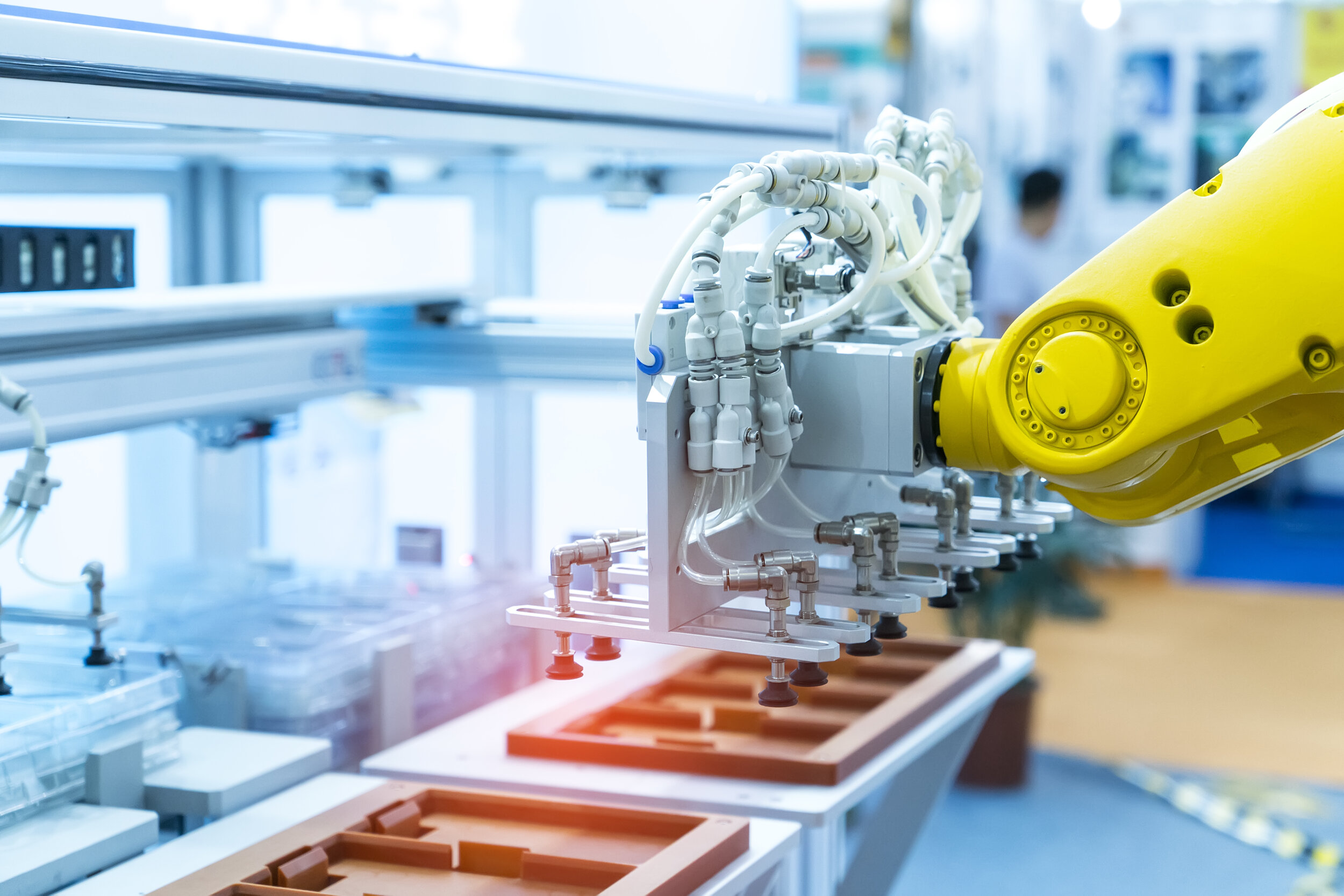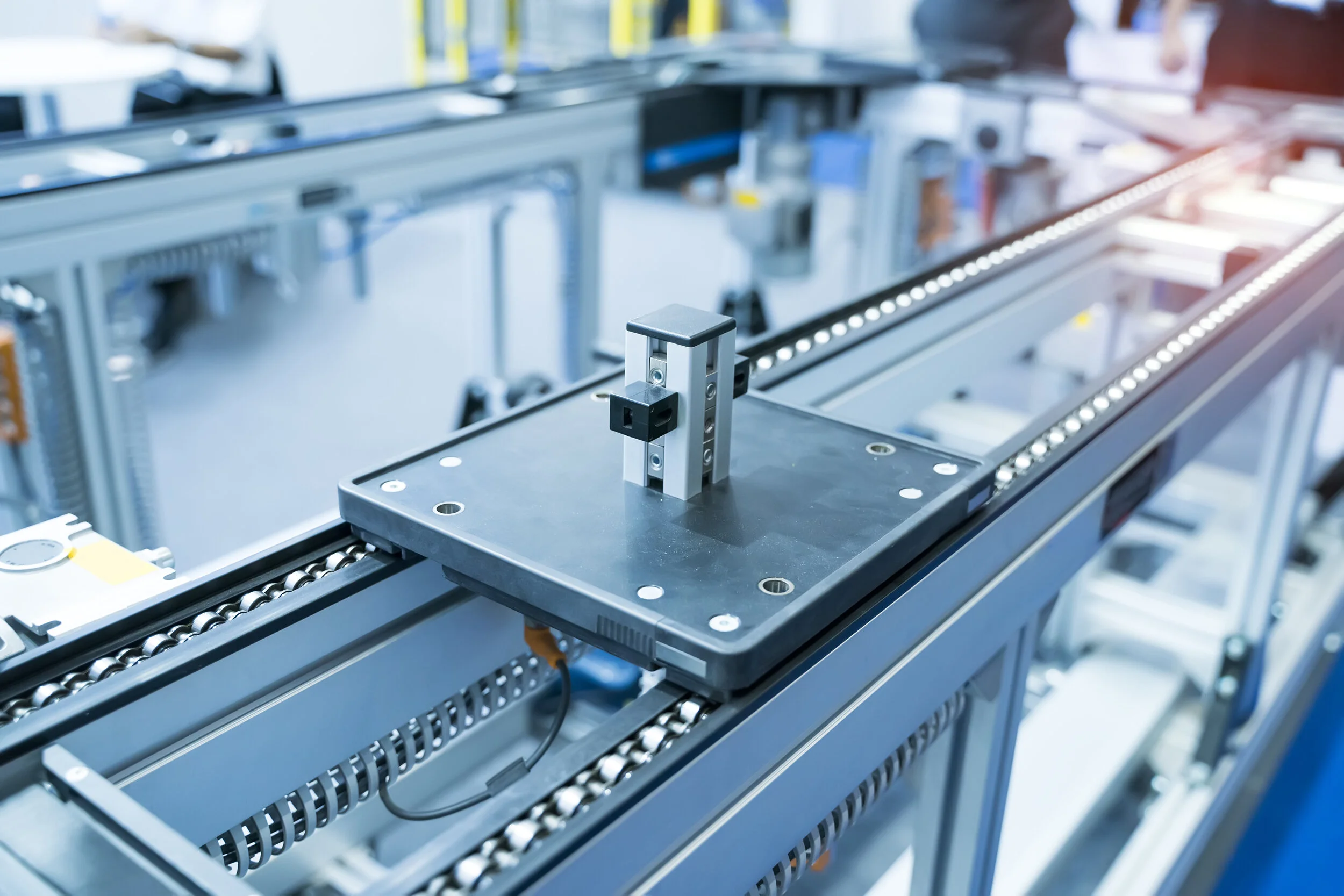The Future of Manufacturing: Lean 4.0
Jose Arturo Garza-Reyes, Professor of Operations Management and Head of the Centre for Supply Chain Improvement at the University of Derby, UK, explores the future of Lean in a digital era.
Over the last few decades, the manufacturing sector has experienced a transition from craft production into mass production, and from mass production into Lean production. Lean production, derived from the Toyota Production System, is a philosophy that consists of simplifying processes to minimize waste and maximise resources. Nowadays, Lean has been generally recognised as a best practice for manufacturing companies around the world. Such has been the success and acceptance of Lean in improving performance and driving competitiveness that its implementation has been extended to other non-manufactring sectors such as healthcare, construction, logistics, banking and telecommunications.
However, since traditional production systems have, once more, evolved into digitalised production systems due to the implementation of Industry 4.0 technologies such as Internet of Things (IoT), big data and data analytics, additive manufacturing or 3D printing, advanced robotics, augmented and virtual reality, cloud computing, simulation, machine learning and artificial intelligence, among others, a series of questions arise. Will Industry 4.0 technologies replace Lean or will they co-exist? Are lean and Industry 4.0 technologies compatible and share synergies or are they divergent to each other? In other words, the overreaching question is, can Lean keep up with the digital era and evolve into Lean 4.0?
Will Industry 4.0 replace Lean or can they co-exist?
Industry 4.0 has started to be recognised as a novel industrial paradigm. It is based on the extensive adoption of communication and information technologies, which will arguably lead organisations to better performance. Briefly, the Industry 4.0 paradigm incorporates all the modern computerisation and automation technologies that companies now utilise to connect a variety of functional tasks of their production systems and supply chains into an integrated digital ecosystem. In other words, the Industry 4.0 paradigm centres in deploying advanced technology to develop integrated and highly adaptive manufacturing systems and supply chains. Benefits associated with digitalised and highly connected production systems and supply chains enabled by Industry 4.0 technologies include revenue gains, increased efficiency and productivity, machine downtime reductions, faster cycle times, improved supply/demand matching, improved product visibility and traceability in supply chains, among many others.
Both Lean and Industry 4.0 are industrial paradigms which philosophies provide a central base to design manufacturing operations around. However, unlike Industry 4.0, which relies on modern technology to address the contemporary problems that companies face, Lean is a technology adversary which philosophy centres on people, processes and a culture of continuous improvement. Thus, at first glance, it may seem that the Lean principles of people orientation and simplicity are antagonistic to the state-of-the-art digital and automated technologies of Industry 4.0.
It is important to keep in mind that despite the technology-driven approach followed by Industry 4.0, the non-technology but people and process aspects which are central to Lean will still play a critical role in modern digital production systems and supply chains. At the end of the day, and despite the high and widespread computerisation, digitalisation and automation of production and supply chain operations, companies still rely on people to design, programme, operate, maintain and improve the machines and robots that enable digitalisation and automation.
Unless humankind evolves to a point similar to science fiction movies like Terminator or A.I. Artificial Intelligence where machines and robots could think and drive their own destinies, even the most automated and digitalised production systems and supply chains will need some form of human input and interaction for them to be able to function. That is where Lean comes into play and finds its usefulness in technologically advanced production systems and supply chains. Therefore, the short and unequivocal answer to the question will Industry 4.0 replace lean? is No. Industry 4.0 technologies will not replace Lean but quite the opposite, they will co-exist since the implementation of Industry 4.0 technologies require effective and efficient processes as a precondition to operate successfully. After all, one of the two Bill Gates’ rules of automation state that “…[any] automation applied to an inefficient operation will [only] magnify the inefficiency.”
It would be difficult to think that although Lean will survive the Industry 4.0 revolution and co-exist with the technology that underpins it, the shape and utilisation of its technical solutions will not change. For instance, advancements in technology have already transformed the traditional physical Kanban cards into e-Kanbans and the piece and paper-based Value Stream Mapping into e-VSM. In the same way, Industry 4.0 technologies may require some Lean solutions to adapt to be able to support and co-exist with such technologies, whereas in some cases, the use of others may be reduced or disappear altogether. For example, it is easy to envisage that highly digitalized and automated production environments will limit the use of whiteboards, physical Kanban cards, Andon cords, among other lean solutions. For this reason, we do not only anticipate the survival of Lean in the new Industry 4.0 era but also the evolution of some of its technical solutions.
Are Lean and Industry 4.0 technologies compatible?
Envisaging the survival and need for Lean in the Industry 4.0 era, the next question that arises is whether the Lean and Industry 4.0 paradigms are compatible and synergetic, i.e. whether they can operate together and support each other. Briefly, we can see that Lean and Industry 4.0 technologies are often not only compatible but also complementary due to the synergies they share. This offers companies the opportunity of achieving higher levels of efficiency in their production systems and supply chains. Some examples of such compatibility and complementary synergies often discussed in the academic and industrial literature refer to:
Just-in-Time (JIT) and Digitalisation of Supply Chains. JIT is recognised as one of the pillars of Lean. JIT relies on accurate and timely information of inventory as a prerequisite for its successful reduction of safety stocks and large buffers. The digitalisation of supply chains can improve this as transparency through better tracking and accurate data on the level of inventories and their location becomes available.
Autonomation and Cyber-physical Systems. Another of the recognised pillars of Lean is autonomation, which refers to the ability of machines to detect abnormal conditions. Cyber-physical systems provide intelligence to machines, which facilitates and enhances autonomation by reporting deviations faster, conducting root-cause analyses of failures and automatically initiating corrective actions.
Total Productive Maintenance (TPM) and Virtual/Augmented Reality, Machine Learning and Big Data. TPM’s philosophy is based on the concept of autonomous maintenance, which refers to shifting the responsibility and authority of routine tasks of maintenance from technicians to machine operators. Virtual and augmented reality can be used by companies, for example, through the used of head-mounted devices to train their operators in autonomous maintenance and provide them with instructions to perform it. Similarly, Industry 4.0 technologies such as machine learning and big data can contribute to monitoring production and supply chain equipment’s wear, loads and defects as well as detecting and localising faults early. Thus, Overall Equipment Effectiveness (OEE) can be improved while machine damages reduced.
Value Stream Mapping (VSM) and Radio-Frequency Identification (RFID) and Internet of Things (IoT). VSM is considered as one of the essential Lean technical solutions to efficiency improvement as it contributes to the identification and elimination of waste in processes. However, VSM provides a snapshot and understanding of a process at a specific point in time only. Thus, VSM can benefit from the transparency and accurate and real-time data collection assistance provided by some Industry 4.0 technologies such as IoT and RFID.
Heijunka (Production Leveling) and Big Data Analytics. Heijunka is a Lean solution which supports the JIT and pull systems by manufacturing products at a constant rate so that other steps of the process may also be performed at a constant and predictable rate. Heijunka is dictated by customer demand, so it can hence benefit from more accurate demand forecasts enabled by big data analytics that can result in more stable production planning.
Similarly, other technical Lean solutions such as Kanbans and one-piece flow can be complemented by Industry 4.0 technologies. Examples include simulation, to determine and understand ideal material parameters such as lot size, stock level or the frequency of delivery and also RFID, to observe the location of batches, their numbers and locations as well as monitor schedule changes.
Although the above examples mainly refer to the benefits and enhancements that Lean can obtain from Industry 4.0, a consensus seems to exist in the scientific and industrial literature which suggests that manufacturing companies that have already embedded Lean into their operations have a better chance to successfully move into the digital era. For instance, Staufen (2016) found, through a survey of 179 companies, that successful early adopters of Industry 4.0 were those that already had experience with Lean.
Can Lean keep up with the digital era and evolve into Lean 4.0?
All of the above evidence clearly suggests that Lean and Industry 4.0 technologies can not only co-exist but also that they may complement and enable each other to offer a more powerful combined paradigm, possibly called Lean 4.0, which manufacturing companies can embark on to improve the performance of their operations and supply chains. Indeed, evidence provided by Küpper et al. (2017) from Boston Consulting Group suggests that a combined Lean and Industry 4.0 approach can help organisations to reduce costs by 40% as opposed to only 15% if digitalisation and Lean are applied separately.
Küpper et al. (2017) report an industrial case in a European food production plant where Lean was enhanced with the use of big data and data analytics. In their study, Küpper et al. (2017) indicated that the company was lacking transparency to understand the plant’s performance and root causes of problems. With a system of sensors, which presumably was based on IoT technology, the company was able to collect key OEE and root causes of machines breakdowns information in real-time and in mobile devices and laptops. Big data and data analytics were used to conduct analyses that identified the failure patterns of production equipment. With this information, the company was able to apply predictive maintenance, significantly increasing the mean time between failures. Alongside the application of benchmarking and the implementation of self-optimisation systems, the company was able to improve its OEE by 8 to 10%. This case study is part of the still very limited empirical evidence of the interaction of Lean and Industry 4.0, but it corroborates what has been widely claimed and reported in the academic and industrial literature regarding the fact that Lean will not disappear with the digitalisation of production systems and supply chains but that it will evolve into Lean 4.0.
References
Staufen, AG (2016), Deutscher Industrie 4.0 Index 2015, : Staufen AG, Köngen.
Küpper, D., Heidemann, A., Ströhle, J., Spindelndreier, D., Knizek, C. (2017), “When lean meets Industry 4.0: The next level of operational excellence”, https://image-src.bcg.com/Images/BCG-When-Lean-Meets-Industry-4.0-Dec-2017_tcm104-179091.pdf (Accessed on 4 April 2020).




